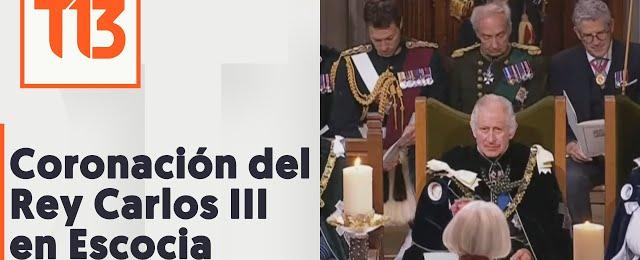Así fue la segunda coronación del Rey Carlos III en Escocia

Title: The Second Coronation of King Charles III in Scotland: A Majestic Affair
Introduction: Scotland witnessed an enchanting spectacle as King Charles III was ceremoniously crowned for the second time in history. The event attracted both national and international attention, drawing from the rich tapestry of Scottish history and tradition. Let’s delve into the details of this remarkable occasion that captivated audiences across the world.
Summary: In a grand ceremony held at the historic St. Giles’ Cathedral in Edinburgh, King Charles III was officially crowned the sovereign monarch of Scotland, marking his second coronation. The regal event took place amidst great pomp and circumstance, with distinguished guests, eminent politicians, and members of the noble elite in attendance.
The coronation began with a majestic procession through the streets of Edinburgh, reminiscent of medieval times. Accompanied by a troop of royal guards and heralds, King Charles III made his way to the cathedral, where the ceremony would commence. The streets were lined with cheering crowds, eagerly awaiting the sight of their newly crowned monarch.
Inside St. Giles’ Cathedral, the atmosphere was electric with anticipation. The ceremony was steeped in tradition, harkening back to the nation’s ancient coronation rituals. The King, dressed in regal attire, knelt before the Archbishop of Scotland, who anointed him with holy oil and presented him with the symbols of power—a sword, a scepter, and a crown.
As King Charles III ascended the throne, applause resounded throughout the cathedral, echoing the nation’s joy and pride. The ceremony concluded with the national anthem, sung by the choir, and a heartfelt address by the King, affirming his commitment to serve the Scottish people and uphold the nation’s values and traditions.
Additional Context: The historical significance of the second coronation lies in its rare occurrence. Events of this scale are infrequent and represent an opportunity for the nation to celebrate its cultural heritage and demonstrate unity. Moreover, the coronation reinforces the constitutional role of the monarchy in Scotland and reinforces the bond between the royal family and its people.
The second coronation holds particular importance as it showcases Scotland’s unique place within the United Kingdom. Scotland has a rich history of resistance and has preserved its distinct cultural identity, making each coronation a poignant moment for the nation. Furthermore, such events attract tourism, stimulate local economies, and generate a sense of pride and cohesion among Scottish citizens.
Conclusion: The second coronation of King Charles III in Scotland was an awe-inspiring affair that celebrated the nation’s rich history and cultural heritage. The regal ceremony, steeped in tradition and carried out with meticulous attention to detail, captivated audiences worldwide. It provided an occasion for the Scottish people to come together and demonstrate their enduring loyalty to the monarchy. To commemorate this historic event, it is vital to celebrate and cherish the traditions, values, and unity that the coronation represents.
Quick Links

